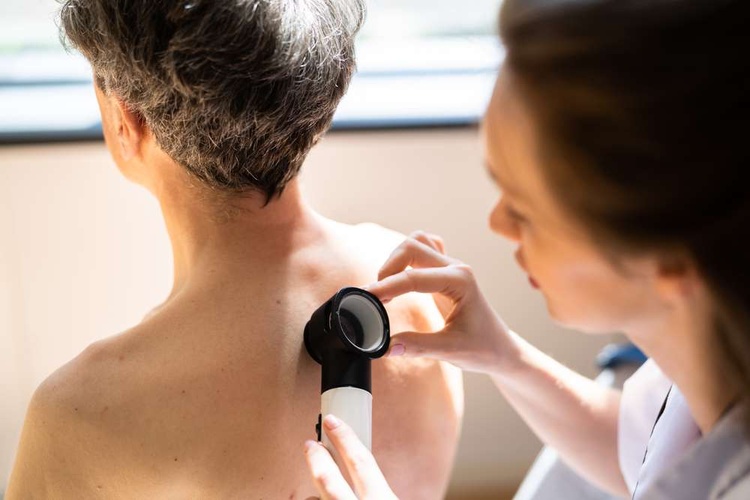Understanding Mycosis Fungoides: Symptoms, Diagnosis, and Treatment Explained
Mycosis fungoides is a rare type of T-cell lymphoma that primarily affects the skin. As the most common form of cutaneous T-cell lymphoma, this condition typically develops slowly and can be challenging to diagnose in its early stages. Understanding its symptoms, diagnosis methods, and treatment options is crucial for both patients and healthcare providers.

What is Mycosis Fungoides and How Does it Develop?
Mycosis fungoides is a type of non-Hodgkin lymphoma that originates in the T-cells, a crucial component of the immune system. Unlike other lymphomas that typically start in lymph nodes, mycosis fungoides begins in the skin. The exact cause of this condition remains unknown, but researchers believe it may result from a combination of genetic and environmental factors.
The disease typically progresses through several stages, starting with patches on the skin that may resemble eczema or psoriasis. Over time, these patches can evolve into thicker plaques and eventually form tumors. In advanced stages, mycosis fungoides can spread to lymph nodes, blood, and internal organs.
What Are the Key Symptoms of Mycosis Fungoides?
Recognizing the symptoms of mycosis fungoides is crucial for early detection and treatment. The most common signs include:
-
Skin changes: Patients often experience patches of dry, red, or scaly skin that may be itchy. These patches can appear anywhere on the body but are most common on areas not exposed to sunlight.
-
Plaques: As the disease progresses, patches may thicken into raised, discolored areas called plaques.
-
Tumors: In more advanced stages, raised lumps or tumors may form on the skin.
-
Itching: Many patients experience persistent itching, which can range from mild to severe.
-
Enlarged lymph nodes: In later stages, lymph nodes may become swollen, particularly in the neck, armpits, or groin.
-
Systemic symptoms: Advanced mycosis fungoides can cause fatigue, weight loss, and night sweats.
It’s important to note that these symptoms can vary greatly among individuals and may mimic other skin conditions, making diagnosis challenging.
How is Mycosis Fungoides Diagnosed?
Diagnosing mycosis fungoides often requires a combination of clinical evaluation, skin biopsies, and specialized tests. The diagnostic process typically includes:
-
Physical examination: A dermatologist will examine the affected skin areas and look for characteristic signs of the disease.
-
Skin biopsy: This is the most crucial diagnostic tool. Multiple biopsies may be needed to confirm the diagnosis and determine the stage of the disease.
-
Immunophenotyping: This test identifies specific proteins on the surface of lymphocytes to determine if they are cancerous.
-
Blood tests: These can help detect the presence of abnormal T-cells in the bloodstream.
-
Imaging studies: CT scans, PET scans, or MRIs may be used to assess if the disease has spread beyond the skin.
-
Lymph node biopsy: If lymph nodes are enlarged, a biopsy may be performed to check for the spread of cancer cells.
The diagnostic process can be complex and may take time, often requiring the expertise of a multidisciplinary team including dermatologists, hematologists, and pathologists.
What Treatment Options are Available?
Treatment for mycosis fungoides is tailored to the individual patient based on the stage of the disease, overall health, and other factors. Available treatment options include:
-
Skin-directed therapies:
-
Topical corticosteroids
-
Topical chemotherapy (e.g., nitrogen mustard)
-
Phototherapy (UVB or PUVA)
-
Radiation therapy
-
-
Systemic therapies:
-
Retinoids (e.g., bexarotene)
-
Interferon alfa
-
Targeted therapies (e.g., mogamulizumab, brentuximab vedotin)
-
Chemotherapy
-
-
Immunotherapy:
-
Checkpoint inhibitors
-
CAR T-cell therapy (in clinical trials)
-
-
Stem cell transplantation: For advanced cases that don’t respond to other treatments
-
Supportive care: To manage symptoms and improve quality of life
Treatment often involves a combination of these approaches and may change as the disease progresses or responds to therapy.
| Treatment Type | Example | Typical Usage |
|---|---|---|
| Skin-directed | Topical corticosteroids | Early-stage disease |
| Phototherapy | PUVA | Early to moderate stage |
| Systemic | Bexarotene | Advanced or refractory disease |
| Immunotherapy | Mogamulizumab | Advanced stage |
| Stem cell transplant | Allogeneic transplant | Aggressive, treatment-resistant cases |
Prices, rates, or cost estimates mentioned in this article are based on the latest available information but may change over time. Independent research is advised before making financial decisions.
The management of mycosis fungoides often requires long-term follow-up and adjustments to the treatment plan. While some patients may achieve long-term remission, others may need ongoing therapy to control the disease. Research into new treatments, particularly in immunotherapy and targeted therapies, continues to offer hope for improved outcomes in the future.
In conclusion, mycosis fungoides is a complex and challenging form of cutaneous lymphoma that requires expert diagnosis and individualized treatment. Understanding its symptoms, diagnostic methods, and available treatments is crucial for patients and healthcare providers alike. With ongoing advancements in therapy, the outlook for many patients with mycosis fungoides continues to improve.
This article is for informational purposes only and should not be considered medical advice. Please consult a qualified healthcare professional for personalized guidance and treatment.




